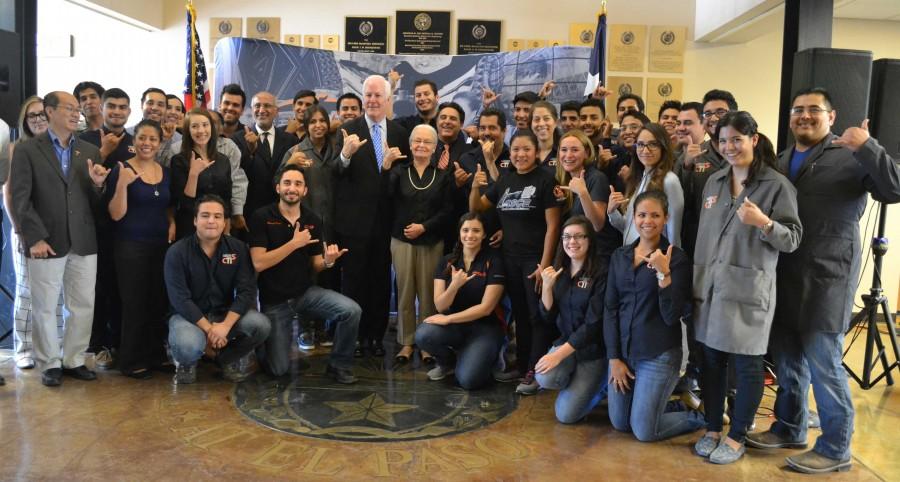U.S. Senator John Cornyn (R-TX) visited UTEP for a roundtable discussion regarding regional transportation challenges with local and state officials.
At the roundtable discussion, Cornyn said that lack of funds is the greatest challenge for transportation development.
The senator said Texas gets less money from the federal government than it collects in gasoline taxes. Cornyn was referring to the Highway Trust Fund, the primary way transportation projects are funded at the state, local and national level. Under the trust, funds collected from fuel taxes paid by motorists and truckers are returned to states through a mathematical formula.
According to a 2009 Heritage report, Texas was one of 28 donor states, or a state that receives less in federal highway money.
“We send more money to the federal money and we get less,” said Ted Houghton, former chair of the Texas Department of Transportation Commission.
Cornyn said the solution to lack of funds are “innovative mechanical solutions” similar to the Texas Transportation Funding Amendment, Proposition 1, which was approved on the November 2014 ballot and allocates half of the funds from Texas’ Rainy Day Fund for transportation funding and maintenance of roads.
As well as Proposition 7, which will be on the November 2015 ballot and would appropriate portions of the general sale and use tax and the motor vehicle tax to the general highway fund.
Another idea mentioned by Cornyn was an international tax system that would provide incentives for U.S. businesses overseas that conduct business in the U.S. and are reluctant to invest in the U.S because they don’t want to be taxed.
On the local level, El Paso Mayor Oscar Lesser said the ability to move goods and freight is important to El Paso.
Lesser mentioned the P3 Program, a $1.5 million agreement between the city and U.S. Customs and Border Patrol, part of which funds agents to work overtime.
There are also talks of increasing hours at the border so that freight can move faster.
“The mayor of Juarez has a made a commitment to help us do that,” Lesser said.
Other officials spoke about the need to improve the I-10 corridor, as well as the city’s 60-year-old port of entries, and a standard mobility account system.
After the roundtable discussion, UTEP President Diane Natalicio and Soheil Nazarian, director of the UTEP Center for Transportation Infrastructure Systems, led the senator around the research lab where students test infrastructure materials.
Natalicio said that transportation is an important issue for UTEP because it is a commuter campus and an estimated 1,000 students cross the border every day to attend school.
“We’re part of this community,” she said.”We play in a big role in providing education on campus and through the Center for Transportation Infrastructure Systems and other research on the campus, we’re contributing to some solutions.”










